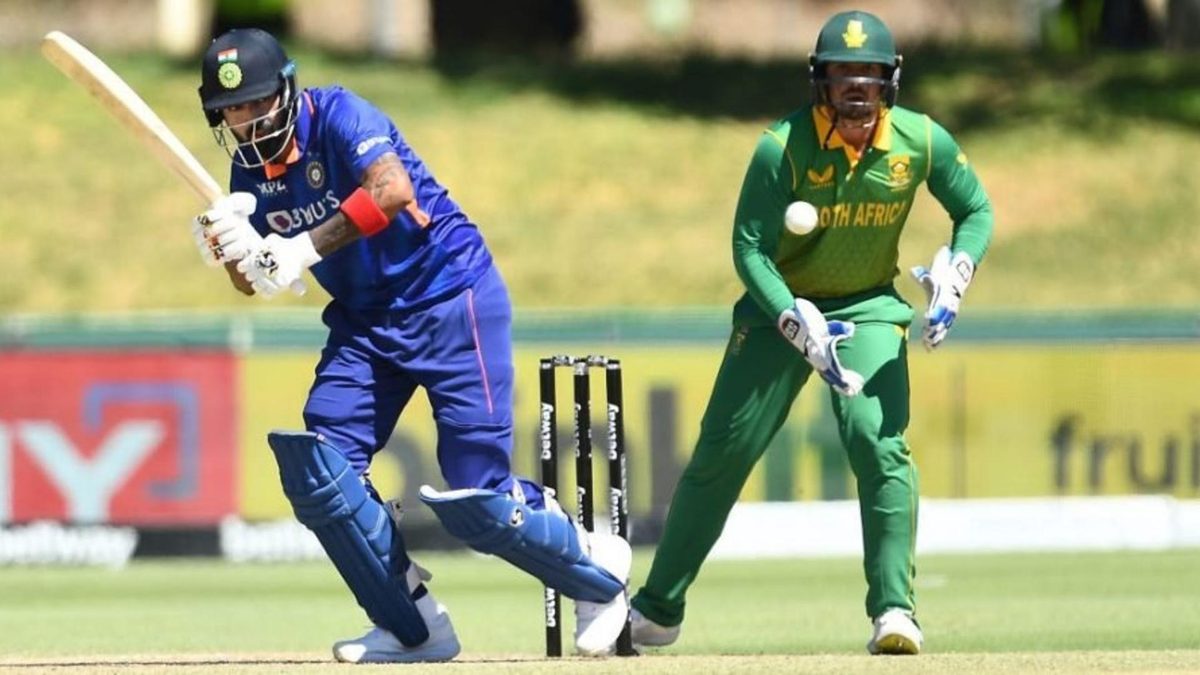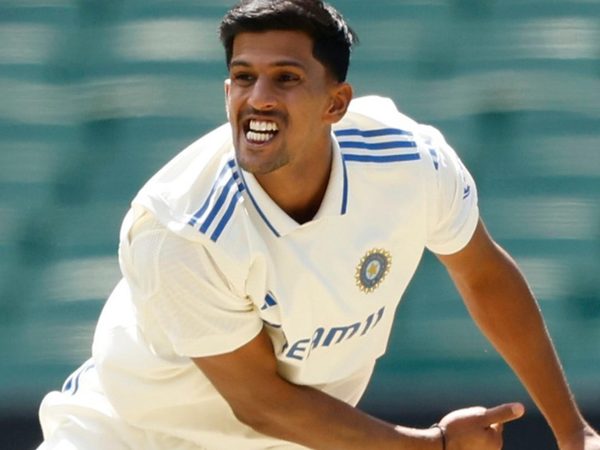
After finding success at No.5 in ODIs, KL Rahul moved back to the top of the order in South Africa, partnering Shikhar Dhawan in Rohit Sharma’s absence. Despite Rahul’s overall success as an opener, Aadya Sharma argues that it’s the middle order where he should be batting.
There are two very distinct modes of KL Rahul, the white-ball batter. One is a sparkling, dynamic presence, breaking open bowling attacks in blustery fashion. The other has a gentle, laconic style, almost bordering on sluggish on certain days, sometimes sucking the rhythm out of an innings and giving it a rusty, early 2000s look.
Versatility is perhaps KL Rahul’s biggest virtue as a batter. He can blow you away with his spectacular range of strokeplay early on, or play the silent enforcer, guarding one end to see off a storm. Sometimes, he can start with the latter, and then switch to the fourth gear with ease. A batter like him is an invaluable asset, someone who can bounce around, be the star role player, especially in a format like ODIs, where it’s not just about ‘bang-bang’, but the need to identify different phases and play accordingly.
Against South Africa at Boland Park on Friday, the other Rahul on display, operating at a pace that was probably a little too sluggish for his team. Opening alongside Shikhar Dhawan, with India looking to level the series, Rahul appeared to be in his own shell. There was no temptation to set the tone early, despite wavering lengths from the hosts. After 10 overs, he had ambled to 21 off 30, and while it meant India had wickets in hand, it also meant that there was more work to be done in the middle overs, to push them towards a total worth defending.
After 25 overs, Rahul was still there, having moved to 45, and striking at 73. India dragged forward, and Rahul kept chipping away. If it weren’t for Rishabh Pant’s free-flowing fifty, the innings could have truly fallen into a rut.
He eventually departed in the 32nd over, finishing on 55 at a strike-rate of 69.62, four fours included. India added 104 runs in the last 18 overs, but it wasn’t enough to save the series.
When Rahul, in his first pre-match press conference as ODI skipper, declared that he would be opening in the absence of Rohit Sharma, mentioning the need to be “flexible”, it would have come as a surprise to some. Shunting around the order isn’t new to Rahul, but he hadn’t opened in his last nine one-dayers, having enjoying a refreshing new life at No.5. It’s a position in which he averages 56.62, striking at 113.61. The recent patch included a century and a fifty in New Zealand, and two fifties in Australia, all of those knocks ending with a strike-rate between 115 and 145. He followed it with a century against England in India, at No.4.
To see the freewheeling Rahul at No.5 turn into a shackled, inhibited version at the top against South Africa proved to be difficult viewing. Apart from the sleepy powerplay, he looked subdued even against part-timer Aiden Markram, rotating little strike. When his partnership with Pant reached 100, Rahul’s contribution lay at 25 off 37.
Among all Indian batters with 10+ innings at No.5, KL Rahul’s average is the highest, as is his strike rate. At that position, Rahul has little freedom to put on a shield: the need to bring out the shots early has seen Rahul handle attacks with contempt, the dynamism adding a different dimension to the middle order.
And it isn’t just about the joy of seeing an unbridled version of Rahul. In the first two ODIs, India’s middle order looked surprisingly inadequate: while Pant stood up in the second game, it was Shardul Thakur, still earning his stripes an all-rounder, admirably batting with the tail at No.7, arguably one spot too high in a full-strength team. With Hardik Pandya’s prolonged absence, India have been missing firepower down the order, and Ravindra Jadeja’s extended break has left them with not many choices.
In such a scenario, moving Rahul from the middle order only adds to the confusion. With the World Cup next year, India would benefit more by installing him where he’s been so successful, solving existing problems, rather than creating new. Also, for a change, it would mean deservedly giving him a longer run at one spot. In 2017, a similar attempt to make him bounce him up and down the order saw him dramatically lose his form, averaging 8.66 in ODIs that year.
Furthermore, having a 36-year-old Shikhar in the setup indicates that he’ll be the one pairing up with Rohit once the latter returns. In Rohit’s absence, India got an opportunity to mould a stand-in opener in Ruturaj Gaikwad, but consigned him to the bench for the first two games, with Rahul hopping back up. Maybe, just maybe, it was because of Rahul’s comfort and familiarity with the opening spot.
It remains to be seen what happens when Rohit return: will Rahul slot himself in the middle order again, or keep his opening spot at the expense of Dhawan? Whichever way it goes, going by recent form and statistics, it does look like more sense in keeping him as an attacking package at five.








